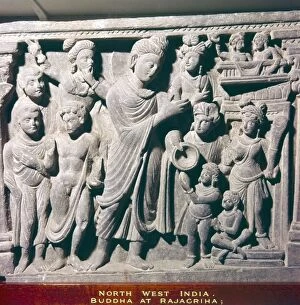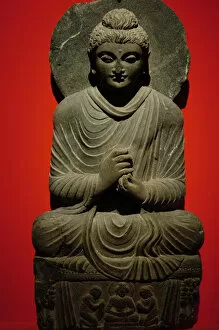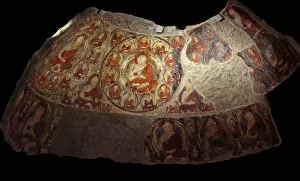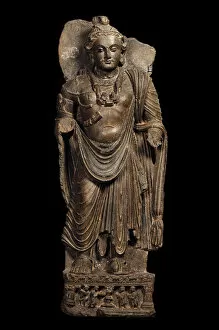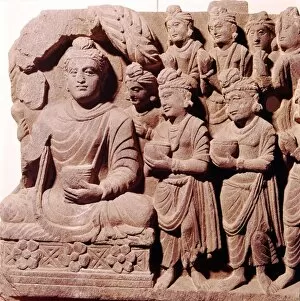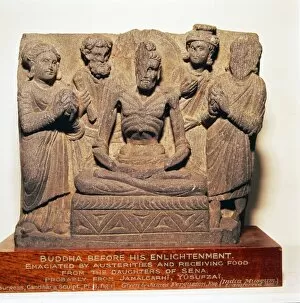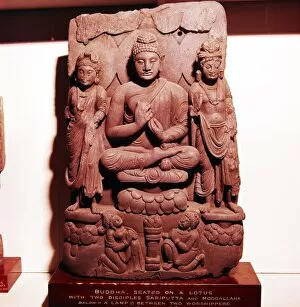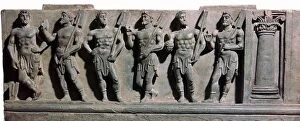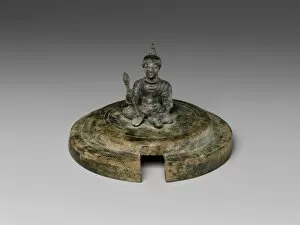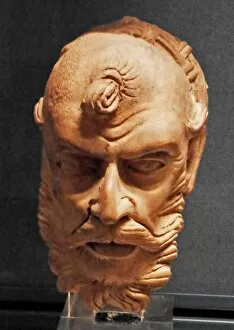Gandhara Collection (#2)
Gandhara, a region rich in ancient Buddhist art and culture
For sale as Licensed Images
Choose your image, Select your licence and Download the media
Gandhara, a region rich in ancient Buddhist art and culture, holds within its boundaries a treasure trove of exquisite sculptures that showcase the artistic mastery of its creators. From the serene Gautama Buddha at Rajagriha to the captivating Offering of Dust, these artworks transport us back to a time when spirituality and creativity intertwined seamlessly. One cannot help but be captivated by the Buddha statue with dharmachakra mudra gesture, which radiates tranquility and enlightenment. Its intricate details and delicate craftsmanship speak volumes about the devotion and skill of those who sculpted it during the 2nd-3rd century. The Kushan period brings forth remarkable creations such as the Head of Buddha and Head of a Bodhisattva. These sculptures embody gracefulness, with their serene expressions and finely carved features. They serve as powerful reminders of Gandhara's deep connection to Buddhism. As we delve further into this artistic journey through time, we encounter enigmatic pieces like Male Head, Adorant Heads, Female Deity Head, Female Adorant Head - all from the 4th/5th century. Though their creators remain unknown, their ability to evoke emotions through stone is undeniable. Each sculpture tells its own story; each face carries an expression that speaks volumes about faith and devotion. Amongst these masterpieces stands out Walking Buddha from the Kushan period - a symbol of spiritual enlightenment in motion. The fluidity captured in this sculpture reflects both physical movement and inner peace simultaneously. Palette with Sea Nymph Riding on a Sea Monster takes us beyond religious themes into mythology from 1st-century B. C. , showcasing Gandhara's versatility in embracing diverse narratives across different periods. Lastly, we come across Emaciated Siddhartha's head - an evocative representation highlighting his path towards enlightenment through self-denial during the 2nd/3rd century. This artwork serves as a reminder that spiritual growth often requires sacrifice and inner strength.















